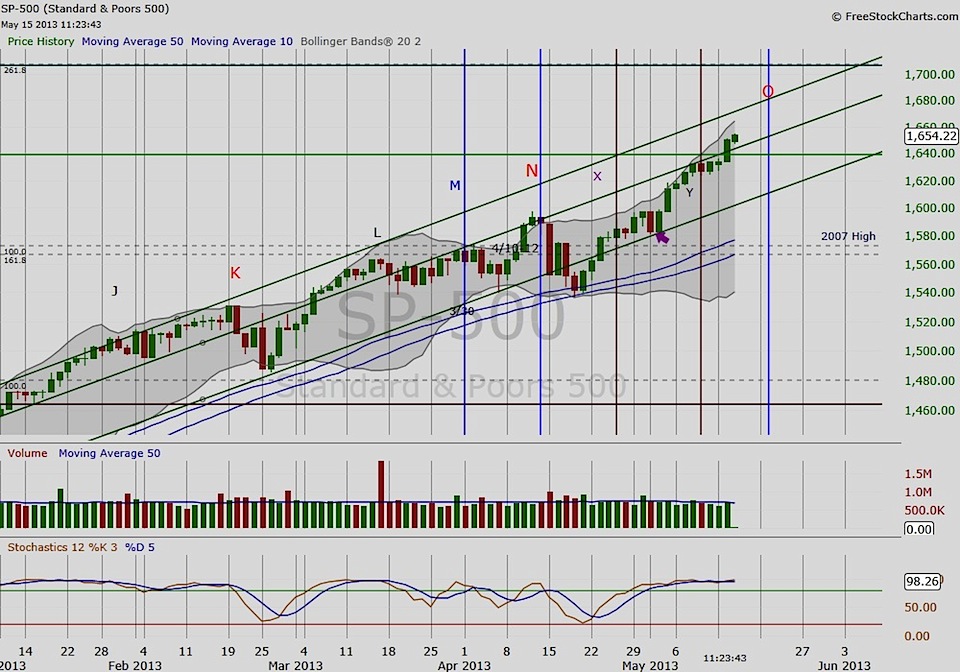Bitcoin's Critical Juncture: Where To Look For Price Movement

Table of Contents
Macroeconomic Factors Influencing Bitcoin Price Movement
Global economic events significantly impact Bitcoin's price. Understanding this correlation is vital for predicting potential price movements. The interplay between inflation, recession fears, and interest rate hikes creates a complex environment that affects Bitcoin's value.
-
Correlation between inflation and Bitcoin's safe-haven status: High inflation often drives investors to seek alternative assets perceived as a hedge against inflation. Bitcoin, with its limited supply, is sometimes viewed as a digital gold, leading to increased demand during inflationary periods. For example, the high inflation rates seen in various countries in 2021-2022 were accompanied by a surge in Bitcoin's price, though the correlation isn't always direct.
-
Impact of quantitative easing (QE) and monetary policy on Bitcoin adoption: Central banks' monetary policies, such as QE, can influence Bitcoin's appeal. QE, which involves injecting money into the economy, can lead to currency devaluation and potentially drive investors towards Bitcoin as a store of value. Conversely, tighter monetary policies, such as interest rate hikes, can reduce the attractiveness of riskier assets like Bitcoin.
-
How global economic uncertainty can drive Bitcoin price volatility: Geopolitical events, economic downturns, and general uncertainty can increase Bitcoin's volatility. Investors often flock to safe haven assets during times of crisis, but Bitcoin's relatively young age and unproven track record means its response can be unpredictable. The 2020 COVID-19 crash, for example, initially saw Bitcoin plummet alongside traditional markets, but it later recovered faster than many other assets.
Regulatory Landscape and its Impact on Bitcoin Price
Government regulations and legal frameworks significantly influence Bitcoin's price. Positive regulatory developments can boost investor confidence and increase demand, while restrictive measures can dampen price action.
-
Impact of positive regulatory developments (e.g., Bitcoin ETF approvals): The potential approval of a Bitcoin exchange-traded fund (ETF) in major markets is widely anticipated to drive significant price increases. An ETF provides easier access to Bitcoin for institutional investors, potentially leading to substantial capital inflows.
-
Negative effects of restrictive regulations (e.g., trading bans): Countries implementing outright bans or severe restrictions on Bitcoin trading can negatively impact its price. Reduced liquidity and limited access to the market can suppress price growth. China's crackdown on cryptocurrency mining and trading in 2021 serves as a prime example of the negative impact of regulatory restrictions.
-
Analysis of different jurisdictions' approaches to Bitcoin regulation and their consequences: The regulatory landscape varies significantly across different countries. Countries with supportive frameworks generally see more active and robust Bitcoin markets, while those with unclear or hostile stances tend to have less developed Bitcoin ecosystems. This regulatory diversity creates both opportunities and risks for investors.
Bitcoin Network Metrics and On-Chain Analysis for Price Prediction
Analyzing on-chain data provides valuable insights into Bitcoin's price movement. Metrics like transaction volume, hash rate, and active addresses offer clues about network activity and potential price trends.
-
Interpreting high transaction volume as a bullish or bearish indicator: High transaction volume can sometimes signal increased market activity and potentially foreshadow price increases. However, high volume can also accompany price drops, especially during periods of intense selling pressure. Context is crucial when interpreting this metric.
-
Analyzing the relationship between hash rate and Bitcoin's security and price: The hash rate, a measure of the computing power securing the Bitcoin network, is generally considered a positive indicator. A higher hash rate signifies a more secure network, which can indirectly boost investor confidence and price.
-
Understanding the significance of active addresses in gauging network adoption and price potential: The number of active addresses on the Bitcoin network reflects the number of unique users interacting with the system. A growing number of active addresses can signal increased adoption and potentially contribute to positive price action. Charts and graphs visualizing the correlation between these metrics and Bitcoin's historical price offer valuable insights for forecasting.
Sentiment Analysis and Market Psychology in Bitcoin Trading
Market psychology and sentiment play a significant role in Bitcoin's price movements. Social media trends, news coverage, and general investor fear, uncertainty, and doubt (FUD) greatly influence price fluctuations.
-
The role of fear, uncertainty, and doubt (FUD) in price fluctuations: Negative news, regulatory uncertainty, or security concerns can trigger FUD, leading to sharp price drops as investors sell off their holdings.
-
Impact of positive news and adoption events on investor sentiment: Positive news, such as institutional adoption, technological advancements, or regulatory clarity, can boost investor sentiment and propel price increases.
-
Utilizing sentiment analysis tools to gauge market mood and predict price movements: Sentiment analysis tools can track social media conversations and news articles to gauge the overall market mood. While not a perfect predictor, this data can offer valuable context alongside other indicators.
Conclusion
Predicting Bitcoin price movement accurately remains challenging, but by analyzing macroeconomic factors, regulatory changes, on-chain metrics, and market sentiment, investors can gain valuable insights. Understanding these critical junctures allows for a more informed approach to trading and investing in Bitcoin. Continue your research into Bitcoin price movement and develop your own strategies for navigating the cryptocurrency market effectively. Stay informed about key factors influencing Bitcoin price movement to make well-informed decisions.

Featured Posts
-
 Champions League Inter Milans Path To The Final After Barcelona Win
May 08, 2025
Champions League Inter Milans Path To The Final After Barcelona Win
May 08, 2025 -
 Liga Chempionov 2024 2025 Predvaritelniy Obzor Polufinalov Arsenal Ps Zh Barselona Inter
May 08, 2025
Liga Chempionov 2024 2025 Predvaritelniy Obzor Polufinalov Arsenal Ps Zh Barselona Inter
May 08, 2025 -
 Psg Fiton Minimalisht Pas Pjeses Se Pare
May 08, 2025
Psg Fiton Minimalisht Pas Pjeses Se Pare
May 08, 2025 -
 Ray Epps V Fox News A Deep Dive Into The January 6th Defamation Case
May 08, 2025
Ray Epps V Fox News A Deep Dive Into The January 6th Defamation Case
May 08, 2025 -
 Bitcoin Price Golden Cross What It Means For Investors
May 08, 2025
Bitcoin Price Golden Cross What It Means For Investors
May 08, 2025
Latest Posts
-
 Demolition Makes Way For New Park In Pierce County
May 08, 2025
Demolition Makes Way For New Park In Pierce County
May 08, 2025 -
 Debate Reignites Has Saving Private Ryan Been Overtaken As The Best War Film
May 08, 2025
Debate Reignites Has Saving Private Ryan Been Overtaken As The Best War Film
May 08, 2025 -
 Us Coast Guard Honors Ryan Gentry For Nearly Three Decades Of Service
May 08, 2025
Us Coast Guard Honors Ryan Gentry For Nearly Three Decades Of Service
May 08, 2025 -
 160 Year Old Pierce County House To Become Park
May 08, 2025
160 Year Old Pierce County House To Become Park
May 08, 2025 -
 Is Saving Private Ryan Still The Best War Movie Fans React
May 08, 2025
Is Saving Private Ryan Still The Best War Movie Fans React
May 08, 2025
